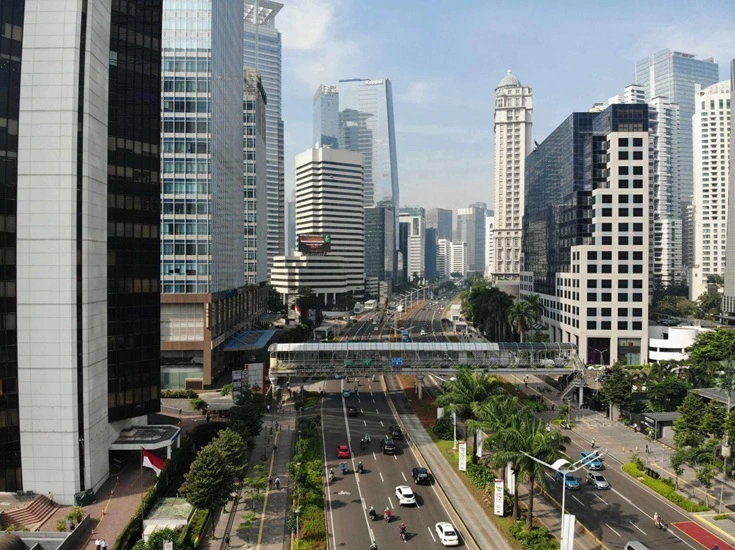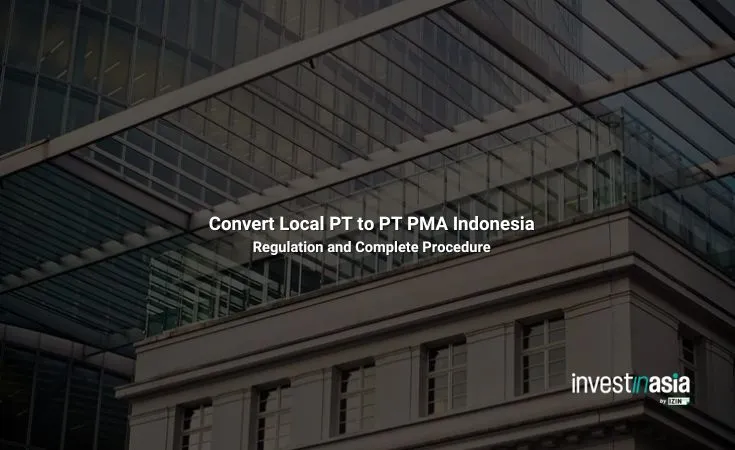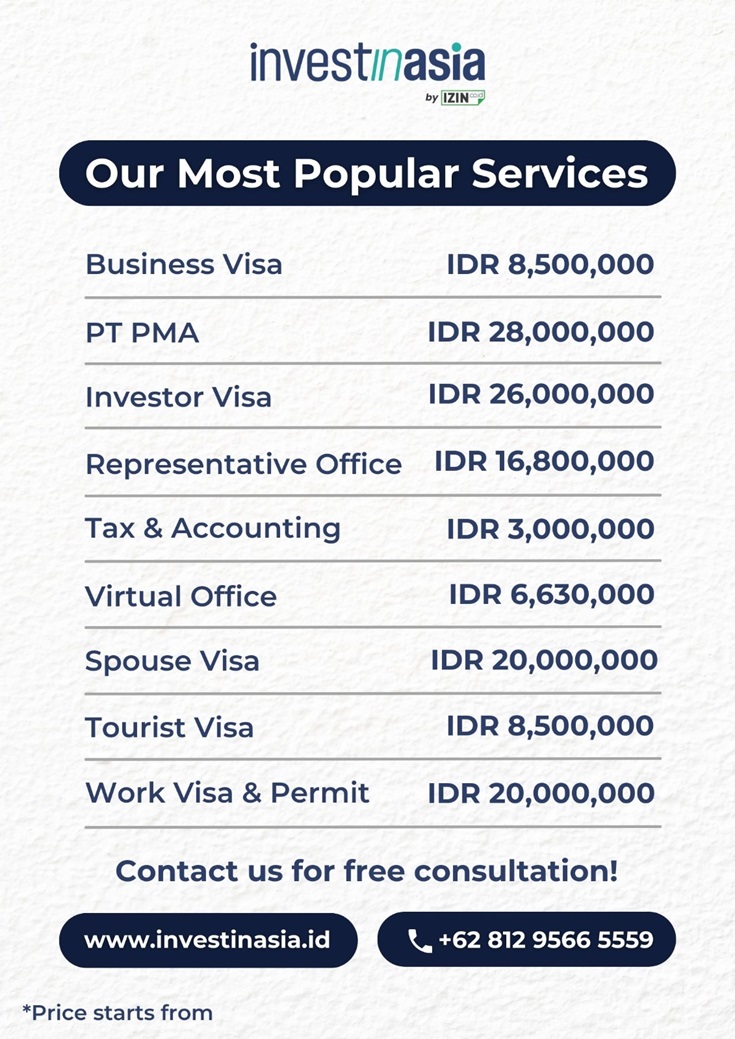You can convert a local PT (PMDN) into a PT PMA under Indonesia’s investment laws, provided you meet foreign shareholding, capital thresholds, and sector compliance. This transformation unlocks access to foreign capital, international contracts, and visa sponsorship.
Below is a structured, expert’s guide on regulation, requirements, steps, challenges, and how we at InvestinAsia can assist you along the way as you expand into the Indonesian market.
Regulatory & Legal Framework in Indonesia


The conversion is anchored in:
- BKPM Regulation No. 4 of 2021 (Guidelines & Procedures for Risk-Based Licensing)
- Government Regulation 5 of 2021 (Risk-Based Business Licensing)
- Law No. 25 of 2007 on Investment
- Presidential Regulation 49 of 2021 (Negative Investment List)
Under these rules, the status change from PT PMDN to PT PMA is considered a change of actor data, which must be managed via OSS. (See Article 57 of BKPM Reg 4/2021.)
Also read: What Is the Legal Basis for Foreign Investment in Indonesia?
PT to PT PMA Conversion Requirements
Here are the requirements you must fulfill to convert a PT into a PT PMA:
Foreign Shareholding and Structure
Any degree of foreign shareholding mandates conversion. You must have at least two shareholders, one resident director, and one commissioner.
Capital and Investment Minimums
The investment plan must total at least IDR 10 billion per KBLI classification. This capital must be realized within 3–5 years.
Sector Compliance
Certain business fields are open to 100% foreign ownership, while others remain restricted (e.g., 49%, 67%, 95%). Understanding these limits is crucial to avoid rejection during the conversion process.
Also read: LKPM Reporting for PMA / Foreign Companies in Indonesia
Step-by-Step Conversion Procedure
Check the table below for the complete procedure for converting a PT to a PT PMA:
| Stage | Activity | Time Estimate* | Key Documents / Notes |
|---|---|---|---|
| 1 | Pre-conversion assessment & due diligence | 5–10 working days | Audit report, legal check, sector analysis |
| 2 | Sector & KBLI validation | 3–5 days | Sector eligibility certificate, negative list check |
| 3 | Shareholder resolution & GMS | 7–14 days | Meeting minutes, share transfer deed |
| 4 | Capital planning & injection | 5–7 days | Capital plan, bank guarantee, proof of funds |
| 5 | Document preparation | 7–10 days | Passports, financials, business plan |
| 6 | Notarial amendment deed | 2–3 days | Revised articles of association |
| 7 | Ministry (Law & Human Rights) approval | 10–14 days | Application forms, legalized deed |
| 8 | Update OSS system | 3–5 days | Updated company profile, shareholding data |
| 9 | BKPM application & registration | 7–10 days | Application, compliance documents |
| 10 | Post-conversion compliance ongoing | — | Quarterly LKPM, tax, reporting obligations |
* Actual time may vary by complexity, sector, government congestion.
As part of this process:
- The Articles of Association must be amended to reflect foreign shareholding, changes in capital, and revised corporate governance terms.
- The status change must be recorded and verified through the OSS system, which interfaces with Ministry of Law systems.
- Should the entity have subsidiaries currently as PT PMDN, those subsidiaries must convert to PMA within 1 year.
Also read: Step-by-Step Guide to Register Your PT PMA in Indonesia 100% Remotely with InvestinAsia
Why Convert? Strategic Benefits & Drawbacks


Benefits
Below are some of the benefits of converting from a PT to a PT PMA:
- Access to global capital and foreign partnerships
- Eligibility for government tenders and contracts reserved for PMA
- Ability to sponsor foreign employees via visas (e.g. KITAS)
- Credibility and perception among international stakeholders
Drawbacks
In addition to the advantages mentioned above, there are several drawbacks that you should be aware of:
- High capital and financial commitment
- Greater regulatory oversight and obligations
- Sector limitations may still restrict some fields
- Ongoing compliance costs and risk exposure
Common Challenges During Conversion
When performing the conversion, there are several challenges you may encounter:
Capital Proof Difficulties
Many investors face issues providing sufficient financial proof—especially when operating under multiple KBLI codes that multiply investment requirements.
Regulatory Delays
Delays often occur due to outdated OSS data or mismatched information between AHU and BKPM systems.
Sector Limitations
Foreign investors must adapt to restricted ownership in specific industries, requiring strategic structuring or joint ventures.
Compliance Burden
Post-conversion, you must submit quarterly LKPM reports, annual tax filings, and maintain continuous compliance to avoid license suspension.
Also read: Why Foreign Investors Choose InvestinAsia for PMA Registration in Indonesia
Final Note
Converting a local PT (PMDN) into a PT PMA is a strategic move with substantial opportunities—provided you navigate the regulatory landscape carefully. With changing investment laws and updated negative list regimes, it’s essential to perform detailed due diligence, correct capital planning, and accurate document execution.
We at InvestinAsia specialize in end-to-end PT PMA registration, conversion, and compliance services. We guide you from assessment to OSS updates, investment licensing, and ongoing reporting. Let us take the regulatory burden so you can focus on growing your business in Indonesia.
Ready to convert your PT into a PT PMA?
Contact us today for a FREE consultation and start your expansion journey.
FAQs
What triggers the need to convert a PT PMDN into a PT PMA?
When a foreign individual or entity acquires any shares in a local PT, even as low as 1%, it must be reclassified as a PT PMA.
Which institutions handle the conversion process?
BKPM, Kemenkumham, and the OSS system oversee the conversion process and ongoing compliance.
How long does the PT PMA conversion process take?
Typically 15–20 working days after document readiness, depending on data synchronization and approval speed.
What are the main post-conversion obligations?
You must submit LKPM reports quarterly, fulfill annual tax filings, and ensure capital realization within the approved timeline.



